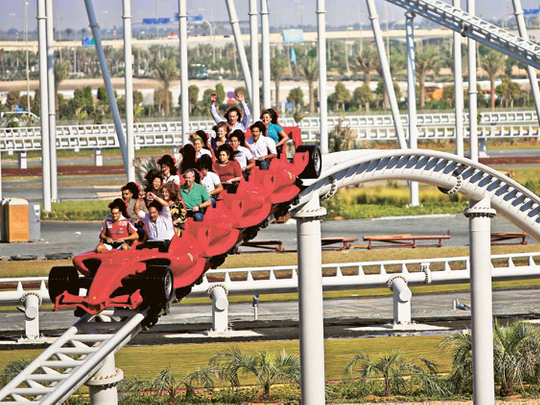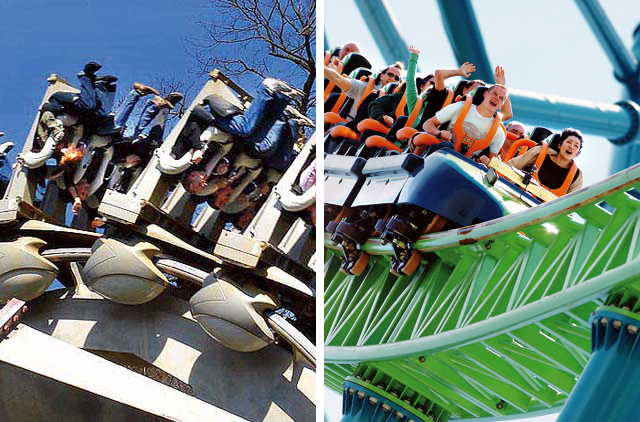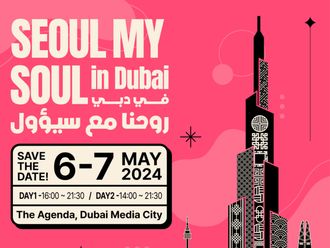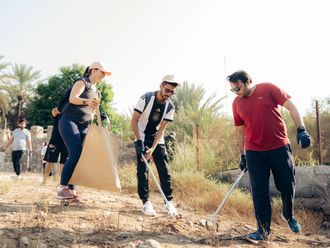
When the roller coaster industry gets excited about something, there’s usually a ‘highest’, ‘fastest’ or ‘longest’ involved. Superlatives get headlines, and headlines mean more visitors – which in turn adds up to more money for the happy execs in the theme parks’ head offices. But the reign of hyperbole might just be coming to an end. While some of the world’s finest coasters are indeed taller or faster than the ones next door, there is a growing demand for a coaster that simply delivers the X-factor.
The oomph – that magic ingredient that puts a smile on your face, wipes it off again with a stomach-wrenching twist, and leaves you knock-kneed and grinning when the ride eventually lurches to a stop. Theme parks are as popular as ever, with the world’s top 25 parks pulling in almost 200 million visitors last year – up 4.8 per cent on 2010. But today the savvy coaster fan wants more than ever before.
Record breaker
The UAE is quite new to the coaster game, only making headlines in 2010 with the opening of Ferrari World in Abu Dhabi and, of course, its incredible Formula Rossa roller coaster. At 240kph, it is the fastest roller coaster in the world, and its record-breaking status has guaranteed huge media attention. The critics have been kind too. The blisteringly quick ride scored a near-perfect review of nine out of ten from respected coaster website themeparkinsider.com. But is being the fastest, biggest or having the most loops enough to draw more people in?
John Wardley, the brains behind the UK’s Alton Towers’ legendary Nemesis and Oblivion roller coasters, is considered by many as the man who brought the modern theme park concept to Europe. Now semi-retired, he still keeps in touch with the industry, and he thinks that it shouldn’t all be about the superlatives. “I believe that roller coasters, along with other devices we use in the theme park industry, are essentially entertainment machines, designed to manipulate many different emotions,” he explains.
“The only things that seem to matter are higher, faster, bigger or world’s first. But a comedian’s best joke is not necessarily his longest or loudest.” He suggests the industry may have forgotten that the best way to approach the design of a new ride is as an entertainer, not an engineer. “There is a huge palette of emotions to play with,” he says. “The trick is not just to appeal to the adrenaline junkies.” Echoing his words, Robb Alvey from themeparkreview.com says that the pleasure factor is often overlooked.
“My dream coaster would have lots of airtime – the sensation of weightlessness – and would allow riders to just have fun,” he says. “Yes, I want a ride that thrills and scares, but I also want to be able to throw my hands in the air and have a great time.” Robb argues that adding record-breaking elements to a coaster only works if it makes for a truly great ride. “You can have the tallest, fastest, whatever-est in the world,” he says, “and it could be a let-down. We’ve seen attractions that are one-trick ponies, and while they might do that one thing really well, they’re never going to be world-class coasters because the overall ride is merely OK.
Being able to just have fun goes a long way with coaster geeks.” A case in point is a ride called Kawasemi at Tobu Zoo Park in Japan. Despite being a trifling 33 metres tall and positively limping along at 86kmh, it is ranked as the fourth best steel coaster in the world. Compare that to Kingda Ka at Six Flags Great Adventure in New Jersey. At 139 metres tall, it is the planet’s tallest coaster – and one of the fastest in the world too – yet it comes in at a lowly number 65 in the rankings.
Revamp rather than rebuild
Increasingly, park owners are leaning on their creative teams to make improvements to what they’ve already got, rather than completely rebuilding. “Two examples of this are the transformation from the X to X2 roller coaster at Six Flags Magic Mountain in California and Texas Giant into New Texas Giant,” says Robb. “Parks have learned that they can take a popular attraction and breathe new life into it by adding new elements, effects, or in the case of Texas Giant, completely overhauling it. From the enthusiast’s perspective, it’s great to see an older ride get some love, and any time a park can put money into an attraction that is ten years old and make it new again, that’s a huge win for everyone.”
When it comes to new-build designs, an emerging trend is for winged roller coasters – where riders sit out on either side of the track with nothing above or below them. “The first winged coaster, which launched in Italy in 2011, was met with mixed reviews,” says Robb. “But Cedar Point in Ohio has announced a new ride called GateKeeper, which looks like it will give fans exactly what they want from this type of ride.” Cedar Point’s winged coaster will be the tallest, longest and fastest of them all – but then there aren’t that many of its kind already built, so it’s easy to claim the gongs.
Nevertheless, this is perhaps proof that it is possible to get into the record books and beguile coaster fans at the same time. While modern steel coasters rule the roost – those designed by Formula Rossa makers Intamin are generally considered the best in the business – wooden coasters show no signs of losing their appeal. In fact, the most hotly anticipated coaster of them all is next year’s Outlaw Run at Silver Dollar City in Missouri. Using new technology, it will incorporate something called a ‘double barrel roll’ where the track twists 360 degrees twice, spinning riders around as if they were on a drill.
Advance publicity material for the ride suggests an exciting barrage of Wild West imagery, as well as an almighty assembly of timber that evokes memories of the early days of coasters. Rising from the earth like a giant wooden mountain, Outlaw Run will drop 16 breathtaking storeys at a near-vertical 81 degrees. Already, it looks like an adventure, a ride, an experience and a step back in time all rolled into one. “Every element of a ride needs to work together to take the rider on a journey,” says Steve Alcorn, author of the book Theme Park Design: Behind The Scenes With An Engineer.
To that end, Steve’s company provides hi-tech on-board sound to roller coasters to add to the experience. “It’s a challenge because of the beating the electronics take,” he says, “but we have products that can stand up to the forces.” While the story might help define the overall experience, what most riders generally want from a coaster is a sight that makes their jaw drop in awe. A giant, hulking roller coaster that kisses the sky will always be hard to resist. “I think one thing that many coaster fans are asking is, ‘Who will break 500 feet [152m]?’” Robb says. “We broke 200 feet in the Nineties, 300 and then 400 feet in the 2000s, and the next logical milestone is 500 feet.
The biggest issue is cost, but I’m sure it will happen at some point.” Jeremy Schoolfield, senior editor of the International Association of Amusement Parks and Attractions’ Funworld Magazine, says that the rising price of raw materials is partly to blame for the slowdown in new-build mega-coasters, but rides aren’t necessarily suffering as a result. “Steepest has become a major new marketing tool, for example,” he points out. Whether it’s the tallest, the fastest, the one with the most inversions or the one most likely to turn your hair white, John Wardley says that the success of a coaster is ultimately all about whether or not the customer gets a kick from riding it.
“On the opening day of a ride, I used to stand in the shadows where no one could see me, just watching people getting a huge amount of fun, excitement and enjoyment out of it,” he says. “I didn’t want to see people scared, I wanted people to come off saying, ‘That was great!’ and feeling good about themselves.” When you’re a roller coaster designer, says John, success is counted by the number of exhilarated people you see getting off the ride, and not by the tally of sick bags. “For me, job satisfaction is all about a smile I can put on a customer’s face.”











